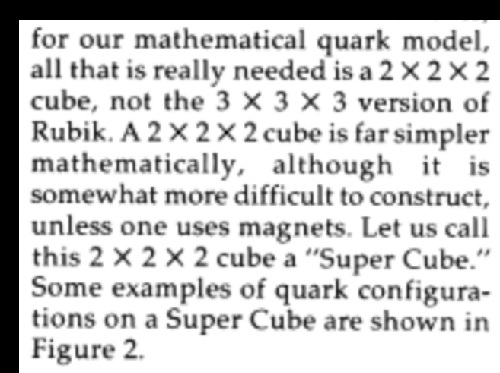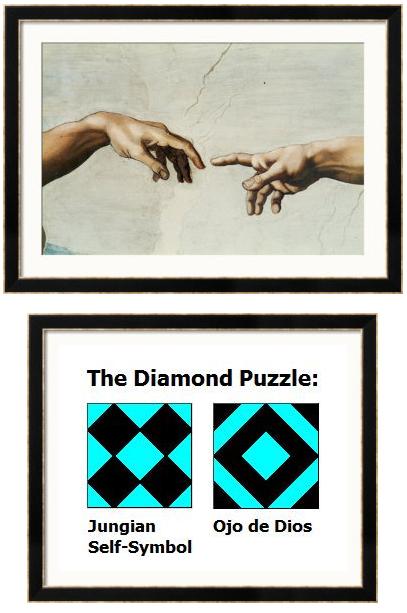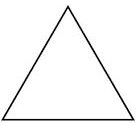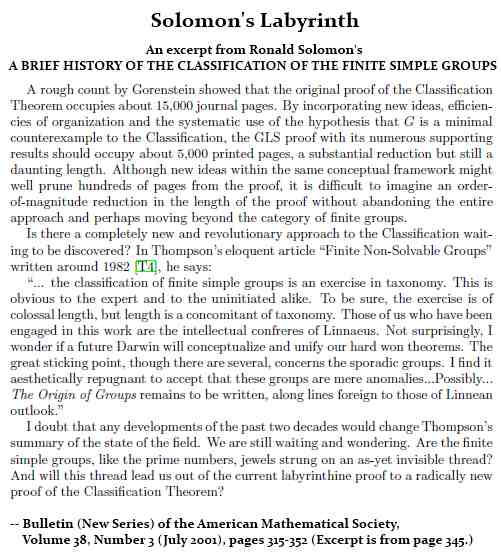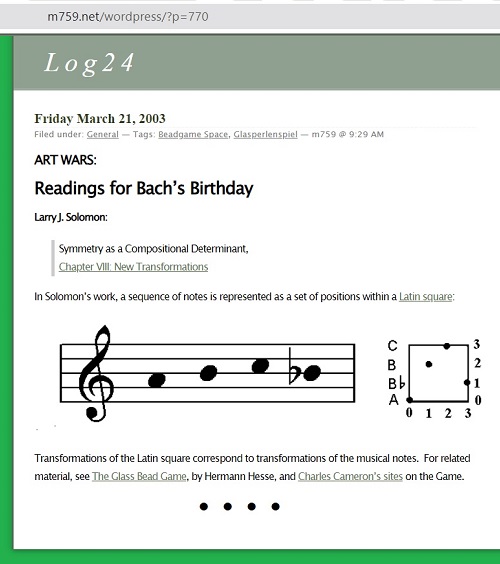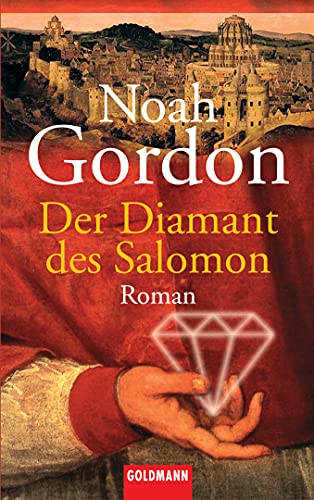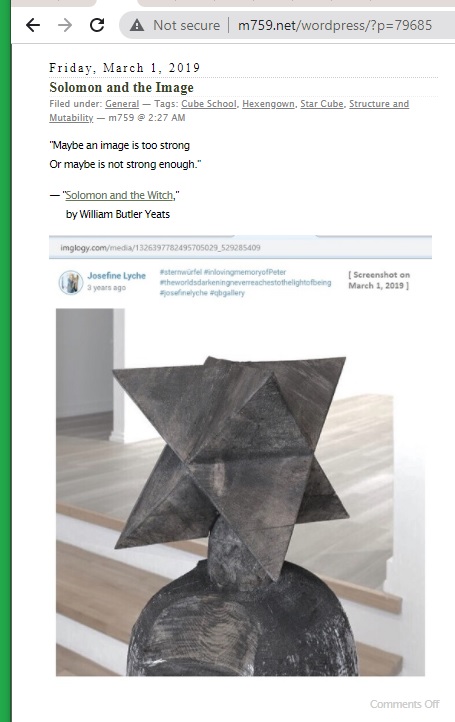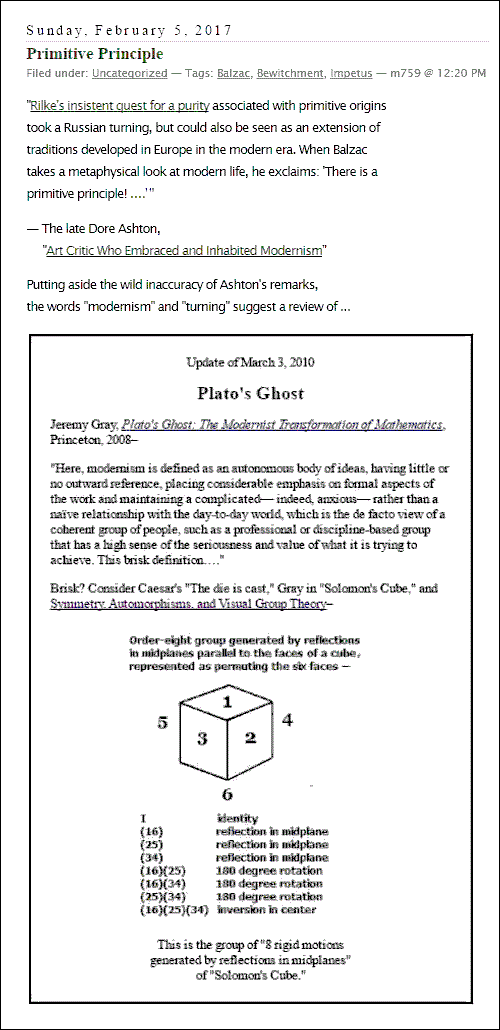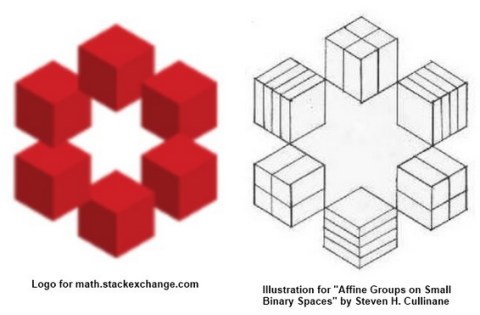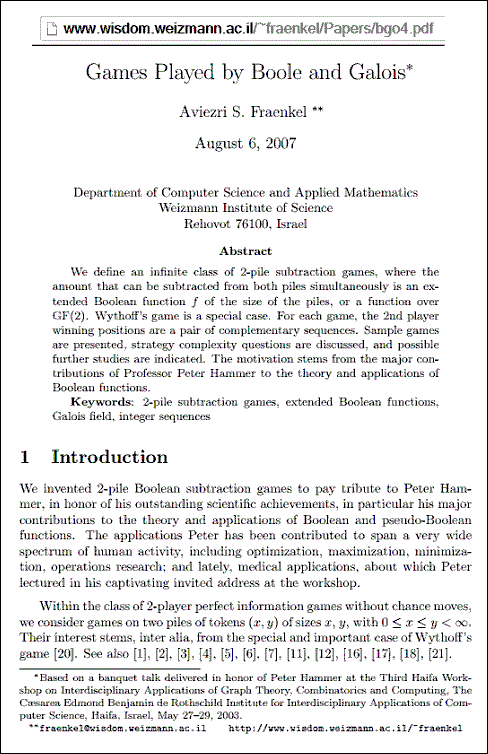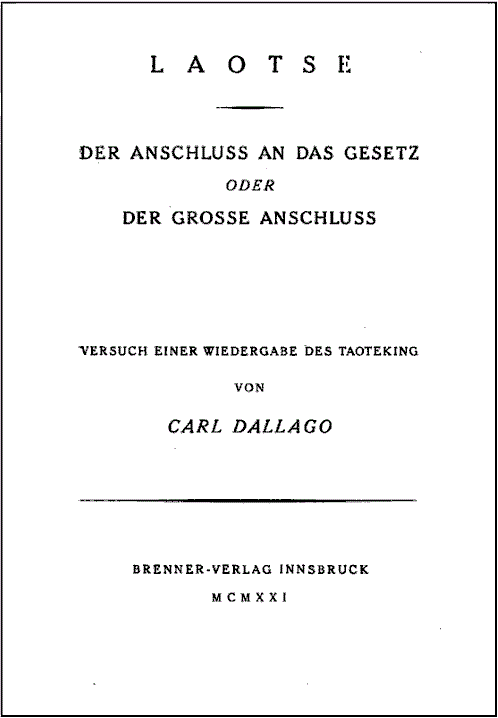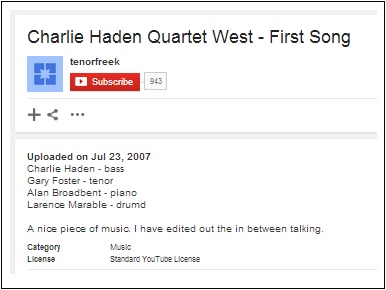See as well Aesthetics in Academia.
Saturday, March 30, 2024
King Solomon’s Minecraft
Saturday, September 10, 2022
Solomon’s Mental Health Month
May 2003 was "Solomon's Mental Health Month" in this journal.
An essay linked to on the 9th of May in that month —
|
"Taking the Veil," by Jessica Kardon
https://web.archive.org/web/20021102182519/ James Hillman, writing in The Soul's Code, argues for his "acorn theory" of human individual identity, and suggests that "each person bears a uniqueness that asks to be lived and that is already present before it can be lived." He insists we are born with a given character, a daimon, the carrier of destiny. This theory is closely linked to the beautiful myth described by Plato in his Republic, when the soul stands before Lachesis and receives his specific soul guardian. Hillman maintains that the daimon will always emerge somehow, even if thwarted or unrecognized. I never had ambitions that reached fruition in the adult world. I have had only two career interests in my life – both formed precognitively. I wanted to be a mermaid or a nun. By the time I learned – shockingly late – that I could not be a mermaid, I had realized I would not be a nun. I concur with Hillman's emphasis on the persistence of early disposition, and I like to imagine that my dreamy, watery, Victorian and self-righteous psyche has held aspects of both of these early interests, throughout my life. I was adopted one month after my birth. I was tended by nuns during the first four weeks of my life. Thereafter, I spent my whole educational life in convent schools. It was the sisters of Saint Vincent de Paul that gave me my favorite musical and my early distortions about romantic love and the gender plans of Our Lord. My misconceptions about love and marriage were culled from the Lerner Loewe musical Gigi, a wonderful film based loosely on a Colette novel. I was summoned along with my whole class to the gymnasium to view the movie under the edgy eye of Sister Bernadette. Sister Bernadette was a large, mesomorphic nun famed for the beatings she gave to boys and girls alike, and feared for the mean zest with which she bestowed her favors upon many of us. I was not beaten – but once, believing I was wearing lipstick, she held my head in a sink and scrubbed my lips until they bled, then slapped me. I recall this with a mild, rueful whimsy. We were all manhandled. In memory, Bernadette seems more like an angry and troubled older sibling than a true figure of authority. Anyway, I loved Gigi. It fed directly into my Francophilia. I was convinced that at some future date, I, like Gigi, would be trained as a courtesan. I, too, would cause some hard case, experienced roué to abandon his chill and irony. I saw myself strolling down the Champs Elysee with Louis Jordan in rapt attendance, pushing a baby carriage, wearing a hat the size of a manhole cover, hoisting a parasol above that to assure the longevity of my adorable pallor. The gender plans of Our Lord had recently been revealed to me too. Sister B. had drawn a ladder on the blackboard, a ladder with three rungs. At the top, she explained, were the priests, the nuns, and the monks. These souls had surrendered their lives to God. All would be taken directly to heaven upon their passing from this vale of tears, as we all referred to the world in those lean emotional times. On the middle rung stood the married. If you married and kept the law – which meant leaving every act of marital congress open to the reception of a child, you would be eligible for heaven. If you were foul in marriage, seeking your pleasure, you were going to be damned. On the bottom rung were those selfish souls who had remained single and had imagined their lives their own. This group had never given themselves to Our Lord. They were headed to hell in a sort of preternatural laundry chute. So we little ladies had two viable options: marry and breed without ceasing – or take the veil. Despite my hat and perambulator fantasies, once given the sorry news of the ladder, the veil became the clear romantic favorite. Therefore I began my research. I obtained a catalogue of nunnery. It offered photographs of each order, describing the duties of the specific order, and displaying the garb of that order. I was looking for two things – a great looking veil and gown, and a contemplative order. I had no desire to sully my glorious vision of myself with a life in the outer world. It was apparent to me that the teaching of children was going to involve a whole range of miseries – making them cry, telling them the bad news about the ladder, and so forth. This was not for me. I saw myself kneeling on the floor of my pristine little cell, serene and untouched by human hands. Teaching would be certain to interfere with the proper lighting. Yoked to a bunch of messy children, I could not possibly have the opalescent illumination of heaven falling reliably on my upturned visage. What divided me from my dream of rebirth as a mermaid was the force of what was real: I could not morph. What divided me from my dream of life as a nun was the force of the erotic: I would not abstain. Now, long years later, I am still underwater, and I am still bending the knee. I live in the blue shadows of hidden grottoes, and I am swimming, too, in the gold of my drifting prayers. September 7th, this dream. I am standing in a dimly lit room, gazing at a group of heavy, antique silk burqas that look weirdly like Fortuny gowns. A holy woman approaches me, and tells me that my soul will leave my body, and enter these garments. She turns and points at a young girl standing nearby, a child with close-cropped hair and a solemn look. My heart knows her, but my eyes don't. For a moment I am thinking, exactly as I did in the seventies when holding a joint: "This isn't working." Suddenly, these things: I feel the shape of flame, then I am the shape. I am released into the air, and as pure essence I enter other forms, dissolving in them, gathering my energy back into myself, and flying out again. This was a sensation so exquisite that my dreaming brain woke up and announced to me: "This is a dream about death." I saw that child again as I flew. This time my eyes knew her. I flew to her, but the flame of my soul would not cohere with hers, this child who was, of course, my own self. In the shadows alone, I heard myself whisper: "I'm in the wind. I'm in the water." This lovely dream, which gave me the sublime gift of a little visceral preview of the soul in the death process, also showed me my guardian spirit; divided, but viable. I pass through my life swimming in one self, kneeling in the other. I thought of Rilke's 29th Sonnet to Orpheus and realized this was what I had been dreaming about all my life, moving between them.
by jessica kardon |
See as well yesterday's post "At a Still Point."
Thursday, March 24, 2022
Mathematics and Narrative: Solomon vs. the Wicked Queen
"Solomon Golomb’s classic book Shift Register Sequences,
published in 1967—based on his work in the 1950s—
went out of print long ago. But its content lives on. . . ."
For part of that content, see Stencils .
A :Log24 post from the date of Golomb's death —
See as well other posts on Mathematics and Narrative.
Thursday, January 20, 2022
The Solomon Pill
"Howard Solomon was building the pharmaceutical company
Forest Laboratories, not by manufacturing drugs but by
licensing them. In his search for deals in the United States and
Europe, he learned about citalopram, a Danish antidepressant."
— Richard Sandomir, New York Times , Friday, Jan. 14, 2022
" '… he’d talk about Verdi writing "Falstaff" in his 80s,' Andrew Solomon
said. ' "Imagine that," he’d say, "in his 80s, he wrote some of the greatest
music ever written." That was the path he hoped to follow.' ”
Saturday, August 28, 2021
Solomon’s Super* Cube…
Geometry for Jews continues.
The conclusion of Solomon Golomb's
"Rubik's Cube and Quarks,"
American Scientist , May-June 1982 —
Related geometric meditation —
Archimedes at Hiroshima
in posts tagged Aitchison.
* As opposed to Solomon's Cube .
Tuesday, August 17, 2021
A Question for Solomon
The previous post, Mythical Figure, suggests a review of posts
tagged Solomon Marcus.
See as well . . .
Friday, March 1, 2019
Solomon and the Image
"Maybe an image is too strong
Or maybe is not strong enough."
— "Solomon and the Witch,"
by William Butler Yeats

Wednesday, September 14, 2016
The Fourth Solomon
See the three dead Solomons in a Log24 post of May 8, 2016.
See also two posts from July on the day Solomon Feferman died —
A sample of the work of Feferman —
See also a tribute to Feferman respectively .
Sunday, May 8, 2016
The Three Solomons
Earlier posts have dealt with Solomon Marcus and Solomon Golomb,
both of whom died this year — Marcus on Saint Patrick's Day, and
Golomb on Orthodox Easter Sunday. This suggests a review of
Solomon LeWitt, who died on Catholic Easter Sunday, 2007.
A quote from LeWitt indicates the depth of the word "conceptual"
in his approach to "conceptual art."
|
From Sol LeWitt: A Retrospective , edited by Gary Garrels, Yale University Press, 2000, p. 376:
THE SQUARE AND THE CUBE "The best that can be said for either the square or the cube is that they are relatively uninteresting in themselves. Being basic representations of two- and three-dimensional form, they lack the expressive force of other more interesting forms and shapes. They are standard and universally recognized, no initiation being required of the viewer; it is immediately evident that a square is a square and a cube a cube. Released from the necessity of being significant in themselves, they can be better used as grammatical devices from which the work may proceed." "Reprinted from Lucy R. Lippard et al ., “Homage to the Square,” Art in America 55, No. 4 (July-August 1967): 54. (LeWitt’s contribution was originally untitled.)" |
See also the Cullinane models of some small Galois spaces —
Thursday, May 5, 2016
Solomon’s Seal
Excerpt from a post of November 4, 2009 —
|
I. The structures in the Diamond Puzzle… Click on image for Jungian background. II: The structure on a recent cover of Semiotica… |
For some related material, see a search
for Solomon Marcus in this journal.
Wednesday, May 4, 2016
Solomon Golomb, 1932-2016
Material related to the previous post, "Symmetry" —
This is the group of "8 rigid motions
generated by reflections in midplanes"
of "Solomon's Cube."
Material from this journal on May 1, the date of Golomb's death —
"Weitere Informationen zu diesem Themenkreis
finden sich unter http://www.encyclopediaofmath.org/
index.php/Cullinane_diamond_theorem und
http://finitegeometry.org/sc/gen/coord.html ."
Friday, January 18, 2013
Solomon’s Rep-tiles
"Rep-tiles Revisited," by Viorel Nitica, in MASS Selecta: Teaching and Learning Advanced Undergraduate Mathematics , American Mathematical Society,
"The goal of this note is to take a new look at some of the most amazing objects discovered in recreational mathematics. These objects, having the curious property of making larger copies of themselves, were introduced in 1962 by Solomon W. Golomb [2], and soon afterwards were popularized by Martin Gardner [3] in Scientific American…."
2. S. W. Golomb: "Replicating Figures in the Plane," Mathematical Gazette 48, 1964, 403-412
3. M. Gardner: "On 'Rep-tiles,' Polygons That Can Make Larger and Smaller Copies of Themselves," Scientific American 208, 1963, 154-157
Two such "amazing objects"—
|
Triangle |
Square |
For a different approach to the replicating properties of these objects, see the square-triangle theorem.
For related earlier material citing Golomb, see Not Quite Obvious (July 8, 2012; scroll down to see the update of July 15.).
Golomb's 1964 Gazette article may now be purchased at JSTOR for $14.
Thursday, July 26, 2012
Solomon’s Seal
(Mathematics and Narrative, continued)
Narrative—
The Ring and The Stone from yesterday’s post, and…
“In Medieval Jewish, Christian and Islamic legends,
the Seal of Solomon was a magical signet ring
said to have been possessed by King Solomon….”
— Wikipedia article, Seal of Solomon
Mathematics—
A fact related to the mathematical
“Solomon’s seal” described above by Bell:
The reference to Edge is as follows—
[3] Edge, W. L., Quadrics over GF(2) and
their relevance for the cubic surface group,
Canadian J. Maths. 11 (1959) ….
(This reference relates Hirschfeld’s remarks
quoted above to the 64-point affine space
illustrated below (via the associated
63-point projective space PG (5, 2)).
Friday, August 26, 2011
Solomon’s Labyrinth
Some context for last night's post on group theorist Michael Aschbacher—
Tuesday, October 12, 2010
King Solomon’s Mind
"Always keep a diamond in your mind."
— Tom Waits/Kathleen Brennan song performed by Solomon Burke at the Paradiso in Amsterdam
|
"The text is a two-way mirror — The French Mathematician |
 |
Saturday, March 23, 2024
Wednesday, November 22, 2023
For E. Lily Yu* — Devs Setting
Friday, July 11, 2014
|
* Author of Jewel Box: Stories ( Erewhon Books, Oct. 24, 2023).
Sunday, November 19, 2023
Six Dimensions
"Sharpie, we have condensed six dimensions into four,
then we either work by analogy into six, or we have to use math
that apparently nobody but Jake and my cousin Ed understands.
Unless you can think of some way to project six dimensions into three–
you seem to be smart at such projections."
I closed my eyes and thought hard. "Zebbie, I don't think it can be done.
Maybe Escher could have done it."


Friday, November 17, 2023
Classicism Continued: An Apotheosis of Modernity
|
From Chapter 23, "Poetry," by Adam Parkes, in Writing in 1910–11, the English poet and critic T. E. Hulme claimed that the two major traditions in poetry, romanticism and classicism, were as different as a well and a bucket. According to the romantic party, Hulme explained, humankind is “intrinsically good, spoilt by circumstance”; that is, our nature is “a well, a reservoir full of possibilities.” For the classical party, however, human nature is “like a bucket”; it is “intrinsically limited, but disciplined by order and tradition to something fairly decent” (Hulme 1987: 117). But it was not only that romanticism and classicism were as dissimilar as a well and a bucket; their contents were different, too. To draw water from the well of romanticism was, in effect, to pour a “pot of treacle over the dinner table,” while the classical bucket was more likely to be full of little stones – or jewels, perhaps. Romanticism, in Hulme’s view, was the result of displaced religious fervor; it represented the return of religious instincts that the “perverted rhetoric of Rationalism” had suppressed, so that “concepts that are right and proper in their own sphere are spread over, and so mess up, falsify and blur the clear outlines of human experience” (Hulme 1987: 118). Classicism, by contrast, traded in dry goods – dry, hard goods, to be precise. Hulme left little doubt as to which side he was on. “It is essential to prove,” he argued, “that beauty may be in small, dry things. The great aim is accurate, precise and definite description. . . . I prophesy that a period of dry, hard, classical verse is coming” (Hulme 1987: 131–3). If by “dry, hard, classical verse” Hulme meant poems looking like the fragments of Sappho, he didn’t have to wait long to see his prophecy fulfilled.
The hard sand breaks,
Far off over the leagues of it, 228
playing on the wide shore, So wrote Hilda Doolittle in “Hermes of the Ways,” the first poem that she signed “H. D., Imagiste” at the behest of her fellow American expatriate Ezra Pound. From Pound’s perspective, the Imagist movement that he co-founded in 1912 with H. D. and the English poet Richard Aldington was finished well before the First World War began in August 1914; throughout this war-torn decade, however, Imagism continued to spawn the poetry of “small, dry things” whose coming Hulme had predicted a few years before. Indeed, modernist poets weren’t content merely to break down the extended heroic narratives – the “spilt religion,” as Hulme put it – of their treacly nineteenthcentury predecessors; they insisted on breaking down small things into ever-smaller particles and subparticles. This logic of disintegration is clearly at work in poems like “Hermes of the Ways,” where each line is metrically unique, creating a sense of perpetual freshness – an apotheosis of modernity, as it were. REFERENCE Hulme, T. E. (1987). Speculations: Essays on Humanism and the Philosophy of Art, ed. Herbert Read. London and New York: Routledge and Kegan Paul. First published 1924. |
Compare and contrast:
Jeremy Gray,
Plato's Ghost: The Modernist Transformation of Mathematics,
Princeton University Press, first edition Sept. 22, 2008 —
"Here, modernism is defined as an autonomous body of ideas,
having little or no outward reference, placing considerable emphasis
on formal aspects of the work and maintaining a complicated—
indeed, anxious— rather than a naïve relationship with the
day-to-day world, which is the de facto view of a coherent group
of people, such as a professional or discipline-based group
that has a high sense of the seriousness and value of what it is
trying to achieve. This brisk definition…."
(Quoted at the webpage Solomon's Cube.)
Friday, November 10, 2023
Cube Mine
In memory of a former president of Boston University —
Other posts now tagged Cube Mine.
Related entertainment —
Friday, October 13, 2023
Hungarian Puzzle
See "Cube Space" + Lovasz.
This search was suggested by . . .
The conclusion of Solomon Golomb's
"Rubik's Cube and Quarks,"
American Scientist , May-June 1982 —
Artbox.group
This new URL will forward to http://m759.net/wordpress/?s=Solomon+Cube.
Monday, May 15, 2023
Boolean Functions Review
The previous post included an illustration by Solomon Golomb
from his 1959 paper "On the Classification of Boolean Functions."
This suggests a review of some later work in this area —
This post was suggested by the word "Boolean" in a May 10
ChatGPT response —

In the above, "Boolean algebras" should be "Boolean functions,"
as indicated by Harrison's 1964 remarks.
Wednesday, May 10, 2023
Saving the Appearances
“… I realized that to me,
Gödel and Escher and Bach
were only shadows
cast in different directions by
some central solid essence.
I tried to reconstruct
the central object, and
came up with this book.”
Related images —


Thursday, April 20, 2023
Alphabet Meets Gestalt . . .
Continued from April 18 .
"Working with words to create art
and working with your hands to create art
seem like two separate activities to me."
— Cover artist, The New Yorker , on April 17
See also Alphabet Blocks in this journal
as well as Escher's Verbum.
|
|
Saturday, February 11, 2023
Zwei Seelen
"Zwei Seelen wohnen, ach! in meiner Brust,
die eine will sich von der andern trennen:
Die eine hält in derber Liebeslust
sich an die Welt mit klammernden Organen;
die andre hebt gewaltsam sich vom Dust
zu den Gefilden hoher Ahnen."
— Faust 1, Vers 1112 – 1117; Vor dem Tor. (Faust),
according to www.gutzitiert.de.
A version in English: "In me there are two souls."
This post was suggested by a New York Times obituary today.
Monday, January 16, 2023
Monday, January 9, 2023
Theology and Narrative
The tortoise of the previous post suggests . . .
"Is it the good turtle soup
or merely the mock?"
Related material from the above
Toronto premiere date —
Monday, November 28, 2022
Groups, Spaces, and Ripoffs
"Rubik's Cube, and the simpler [2x2x2] Super Cube, represent
one form of mathematical and physical reality."
— Solomon W. Golomb, "Rubik's Cube and Quarks:
Twists on the eight corner cells of Rubik's Cube
provide a model for many aspects of quark behavior,"
American Scientist , Vol. 70, No. 3 (May-June 1982), pp. 257-259
From the last (Nov. 14, 2022) of the Log24 posts now tagged Groups and Spaces —
From the first (June 21, 2010) of the Log24 posts now tagged Groups and Spaces —
Thursday, November 10, 2022
For Students of the Forked Tongue



The above 1975 book by Robert Greer Cohn, Modes of Art, is
Volume I of a planned three-volume work.
The passage below is from a review of Cohn's Vol. II, Ways of Art —
|
Franklin, Ursula (1987) "Book Review: A Critical Work II. . . . . Those not familiar with the author's epistemology should begin with Appendix A of Ways of Art , a schematic demonstration of his tetrapolar-polypolar-dialectic, especially as it concerns the development of the French novel within the European tradition. But this dialectic, which has antecedents in Kierkegaard, Mallarme and Joyce, underlies all art, because: "this dimensional pulsation, or tetrapolar (and polypolar) higher vibrancy is, in short, the stuff of life: life is vibrant in this more complex way as well as in the more bipolar sense" (7). Cohn shows that "far out enough" the male or linear and the female or circular, the male vertical and the female horizontal dimensions "tend to merge as in relativity theory" (19). Ways of Art shows us the way through a historical becoming of art in its complex dialectic in which the metonymic (horizontal) axis constantly interrelates with the metaphoric (vertical). "Life is the mother, art the father" (vii); hence Cohn's quarrel with most contemporary Feminism, which is pronounced throughout the volume. Firmly grounded in its author's tetra-polypolar epistemology, this beautiful book becomes, however, at no point dryly abstract; it is the mature work of a true humanist who stands in clear and open opposition to the dehumanizing trend of "the quasi-scientific reductionism and abstract gimmickry of a great deal of current academic literary study, bellwethered by the structuralists, post-structuralists, and deconstructionists" (vi). Abundant footnotes constitute a substantial part of Ways of Art , on occasion developing insights almost into essays demonstrating crucial points along the general flow of the tradition from "Obscure Beginnings;' the opening chapter, to our "Contemporaries;' the last. Cohn reminds us that "In the Beginning was the Word;' for the Judaeo-Christian tradition at least, which his study fervently embraces; thus, for example, in Appendix 0 on "The Dance of the Sexes;' he censures "those who live by slogans, camps, and peer-opinion, the countless little bastard cults which characterize an era which has massively veered away from our free and beautiful Greco-Judaeo-Christian tradition" (332). Cohn traces man's way and that of his myths and rituals culminating in his art from that beginning along the lines of Freud, Neumann and Cassirer, and many others, always demonstrating the underlying polypolar dialectical rhythm. Thus in "From Barbarism to Young Culture;' we follow the Celts to Druidic ritual, Hebrew beginnings to the Psalms, Dionysian ritual to Greek tragedy, and thence to the beginnings of French dramatic literature originating in the Quem quaeritis sequence of the medieval Mass. Along the way arises artistic symbolism, for Cohn synonymous with "effective poetry;' to finally "ripen in France as never before" (99). Table I (134) graphs this development from the twelfth to the late nineteenth and early twentieth centuries. The author traces the rise of the artistic vocation from its antecedents in the double function of bard and priest, with the figure of Ronsard at the crossroads of that dying institution and the nascent concept of personal glory. "The Enlightenment Vocation" is exemplified in Montaigne, who humanizes the French cultural elite and points the way to French classicism and, farther down the road, after the moral collapse with the outgoing reign of Louis XIV, toward the Age of Reason. Clearly the most significant figure of the French Enlightenment for all of Western civilization is Rousseau, and Cohn beautifully shows us why this is so. Subsequently, "the nineteenth-century stage of the writer's journey will lead, starting from the crossroads of Rousseau, primarily in these two directions: the imperialistic and visionary prose of Balzac, the equally ambitious poetry of Mallarme", brothers under the skin" (199). And these two paths will then be reconciled in Proust's monumental A la recherche du temps perdu . . . . . |
Monday, October 31, 2022
Folklore vs. Mathematics
Saturday, June 25, 2022
Tuesday, June 21, 2022
For the Church of Synchronology*
See also this journal on the above Cambridge U. Press date.
"There are many places one can read about twistors
and the mathematics that underlies them. One that
I can especially recommend is the book Twistor Geometry
and Field Theory, by Ward and Wells."
— Peter Woit, "Not Even Wrong" weblog post, March 6, 2020.
* A fictional entity. See Synchronology in this journal.
Friday, May 6, 2022
Interality and the Bead Game
WIkipedia on the URL suffix ".io" —
"In computer science, "IO" or "I/O" is commonly used
as an abbreviation for input/output, which makes the
.io domain desirable for services that want to be
associated with technology. .io domains are often used
for open source projects, application programming
interfaces ("APIs"), startup companies, browser games,
and other online services."
An association with the Bead Game from a post of April 7, 2018 —
|
Glasperlenspiel passage quoted here in Summa Mythologica —
“"I suddenly realized that in the language, or at any rate A less poetic meditation on the above 4x4x4 design cube —
"I saw that in the alternation between front and back, See also a related remark by Lévi-Strauss in 1955:
"…three different readings become possible: |
The recent use by a startup company of the URL "interality.io" suggests
a fourth reading for the 1955 list of Lévi-Strauss — in and out —
i.e., inner and outer group automorphisms — from a 2011 post
on the birthday of T. S. Eliot :
A transformation:
Click on the picture for details.
Interality and the I Ching
See "Flusser and the I Ching," by Peter Zhang.
Zhang has written extensively on the concept of "interality,"
a term coined by his colleague Geling Shang.
For interality as the mathematics underlying the natural
automorphism group of the I Ching, see my own work.
Sunday, April 24, 2022
Structuralism: Three Betweens
|
Tuesday, November 3, 2009 Filed under: General,Geometry — Tags: Glasperlenspiel, Solomon Marcus — m759 @ 10:10 PM Book review by Jadran Mimica in Oceania, Vol. 74, 2003: "In his classic essay of 1955 'The Structural Study of Myth' Levi-Strauss came up with a universal formula of mythopoeic dynamics [fx(a) : fy(b) :: fx(b) : fa-1(y)] that he called canonical 'for it can represent any mythic transformation'. This formulation received its consummation in the four massive Mythologiques volumes, the last of which crystallises the fundamental dialectics of mythopoeic thought: that there is 'one myth only' and the primal ground of this 'one' is 'nothing'. The elucidation of the generative matrix of the myth-work is thus completed as is the self-totalisation of both the thinker and his object." So there. At least one mathematician has claimed that the Levi-Strauss formula makes sense. (Jack Morava, arXiv pdf, 2003.) I prefer the earlier (1943) remarks of Hermann Hesse on transformations of myth: "…in the spirit of the Glass Bead Game, everything actually was all-meaningful, that every symbol and combination of symbols led not hither and yon, not to single examples, experiments, and proofs, but into the center, the mystery and innermost heart of the world, into primal knowledge. Every transition from major to minor in a sonata, every transformation of a myth or a religious cult, every classical or artistic formulation was, I realized in that flashing moment, if seen with a truly meditative mind, nothing but a direct route into the interior of the cosmic mystery, where in the alternation between inhaling and exhaling, between heaven and earth, between Yin and Yang, holiness is forever being created." |
Saturday, March 26, 2022
Box Geometry: Space, Group, Art (Work in Progress)
| Name Tag | .Space | .Group | .Art |
|---|---|---|---|
| Box4 |
2×2 square representing the four-point finite affine geometry AG(2,2). (Box4.space) |
S4 = AGL(2,2) (Box4.group) |
(Box4.art) |
| Box6 |
3×2 (3-row, 2-column) rectangular array representing the elements of an arbitrary 6-set. |
S6 | |
| Box8 | 2x2x2 cube or 4×2 (4-row, 2-column) array. | S8 or A8 or AGL(3,2) of order 1344, or GL(3,2) of order 168 | |
| Box9 | The 3×3 square. | AGL(2,3) or GL(2,3) | |
| Box12 | The 12 edges of a cube, or a 4×3 array for picturing the actions of the Mathieu group M12. | Symmetries of the cube or elements of the group M12 | |
| Box13 | The 13 symmetry axes of the cube. | Symmetries of the cube. | |
| Box15 |
The 15 points of PG(3,2), the projective geometry of 3 dimensions over the 2-element Galois field. |
Collineations of PG(3,2) | |
| Box16 |
The 16 points of AG(4,2), the affine geometry of 4 dimensions over the 2-element Galois field. |
AGL(4,2), the affine group of |
|
| Box20 | The configuration representing Desargues's theorem. | ||
| Box21 | The 21 points and 21 lines of PG(2,4). | ||
| Box24 | The 24 points of the Steiner system S(5, 8, 24). | ||
| Box25 | A 5×5 array representing PG(2,5). | ||
| Box27 |
The 3-dimensional Galois affine space over the 3-element Galois field GF(3). |
||
| Box28 | The 28 bitangents of a plane quartic curve. | ||
| Box32 |
Pair of 4×4 arrays representing orthogonal Latin squares. |
Used to represent elements of AGL(4,2) |
|
| Box35 |
A 5-row-by-7-column array representing the 35 lines in the finite projective space PG(3,2) |
PGL(3,2), order 20,160 | |
| Box36 | Eurler's 36-officer problem. | ||
| Box45 | The 45 Pascal points of the Pascal configuration. | ||
| Box48 | The 48 elements of the group AGL(2,3). | AGL(2,3). | |
| Box56 |
The 56 three-sets within an 8-set or |
||
| Box60 | The Klein configuration. | ||
| Box64 | Solomon's cube. |
— Steven H. Cullinane, March 26-27, 2022
Wednesday, March 9, 2022
Supercube Space
The new URL supercube.space forwards to http://box759.wordpress.com/.
The term supercube is from a 1982 article by Solomon W. Golomb.
The related new URL supercube.group forwards to a page that
describes how the 2x2x2 (or eightfold, or "super") cube's natural
underlying automorphism group is Klein's simple group of order 168.
For further context, see the new URL supercube.art.
For some background, see the phrase Cube Space in this journal.
Friday, December 31, 2021
Aesthetics in Academia
Related art — The non-Rubik 3x3x3 cube —
The above structure illustrates the affine space of three dimensions
over the three-element finite (i.e., Galois) field, GF(3). Enthusiasts
of Judith Brown's nihilistic philosophy may note the "radiance" of the
13 axes of symmetry within the "central, structuring" subcube.
I prefer the radiance (in the sense of Aquinas) of the central, structuring
eightfold cube at the center of the affine space of six dimensions over
the two-element field GF(2).
Thursday, November 25, 2021
Fire
"Faced with a larger surface than he had ever provided with facets,
in his desperation he had divided the diamond with imaginary lines,
treating each section as if it were a single small stone and arranging
the clusters of facets so they would interact with one another, as if they
were single facets in a smaller stone. What if the final result lacked fire?"
— Novel* by Noah Gordon, who reportedly died on Monday, Nov. 22.
*
German translation of an April 1, 1979, novel.
Thursday, November 4, 2021
Socrates — “One, Two, Three … But where is the Fourth?”
See "Empty Quarter."
Tuesday, October 26, 2021
Katz! — The Musical…
From a post of June 28, 2020 —
"David Solomon Katz was born in Brooklyn to Jewish immigrant parents from
Eastern Europe on Oct. 23, 1916, and grew up in a neighborhood famous for
the gangsters of Murder Inc. …."
Further context —
"His early movie credits include 'The Lusty Men' (1952), a western, directed by
Nicholas Ray and starring Susan Hayward and Robert Mitchum…."
— Bruce Weber in The New York Times , Sept. 9, 2010
Wednesday, July 7, 2021
Monday, June 21, 2021
The Bauhaus Dance
"If you have built castles in the air,
your work need not be lost;
that is where they should be.
Now put the foundations under them.”
— Henry David Thoreau
Wednesday, March 3, 2021
Ink
From this journal on Nov. 9-12, 2004:
|
Fade to Black “…that ineffable constellation of talents that makes the player of rank: a gift for conceiving abstract schematic possibilities; a sense of mathematical poetry in the light of which the infinite chaos of probability and permutation is crystallized under the pressure of intense concentration into geometric blossoms; the ruthless focus of force on the subtlest weakness of an opponent.” — Trevanian, Shibumi “‘Haven’t there been splendidly elegant colors in Japan since ancient times?’ ‘Even black has various subtle shades,’ Sosuke nodded.” — Yasunari Kawabata, The Old Capital An Ad Reinhardt painting described in the entry of
Ad Reinhardt, Abstract Painting, 1960-66. The viewer may need to tilt the screen to see that “The grid is a staircase to the Universal…. We could think about Ad Reinhardt, who, despite his repeated insistence that ‘Art is art,’ ended up by painting a series of… nine-square grids in which the motif that inescapably emerges is a Greek cross.  Greek Cross There is no painter in the West who can be unaware of the symbolic power of the cruciform shape and the Pandora’s box of spiritual reference that is opened once one uses it.” — “Grids,” by Rosalind Krauss, |
Related material from The New York Times today —
Monday, November 9, 2020
Geometric Logic
“Strawberry Fields Forever” — Song title
“Let me take you down
’Cause I’m going to Strawberry Fields
Nothing is real
And nothing to get hung about… ” More
“Ah, but the strawberries, that’s, that’s where I had them,
they laughed at me and made jokes, but I proved
beyond the shadow of a doubt, and with geometric logic,
that a duplicate key to the wardroom icebox did exist,
and I’ve had produced that key if they hadn’t pulled
the Caine out of action. I, I know now they were only
trying to protect some fellow officer. … Naturally, I can
only cover these things from memory. If I left anything out,
why, just ask me specific questions and I’ll be glad to
answer them, one by one.” — monologuedb.com
See also The Solomon Key .
Sunday, November 1, 2020
Art Theory
“If you have built castles in the air, your work need not be lost;
that is where they should be. Now put the foundations under them.”
— Henry David Thoreau
Between, or: Interality Illustrated (according to Sherald)
“We live in between the lines;
in between the cracks . . . .
That’s where the bonds are formed. ”

Sunday, June 28, 2020
Mystic Cristal Revelation
In memory of actress Linda Cristal — The New York Times today —
“After a modest film career, followed by guest roles on television,
Ms. Cristal auditioned for ‘The High Chaparral,’ a western
developed by David Dortort, the creator and producer of ‘Bonanza.’
In her telling, it was a memorable occasion.”

Judy Carne and Hoss in NBC’s “Bonanza,” a nemesis of
CBS Sunday programming.
The New York Times on “Bonanza” in 2010 —
“Mr. Dortort oversaw production of the show for most of its run. In addition
to telling stories based on historical events involving the Comstock Lode and
the oncoming Civil War, the show dealt with themes like racial prejudice and
religious tolerance. Mostly, though, its drama, and its popularity, were because
of its focus on the Cartwrights and their tightknit bond.
‘What is the message?’ Mr. Dortort said. ‘Love is the message.’
David Solomon Katz was born in Brooklyn to Jewish immigrant parents from
Eastern Europe on Oct. 23, 1916, and grew up in a neighborhood famous for
the gangsters of Murder Inc. …”
Wednesday, June 10, 2020
Count to X
“X marks the spot” — Indiana Jones.
Indiana Jones’s love interest in “The Last Crusade” was Alison Doody.
See as well . . .

Howdy, Doody.
Sunday, May 3, 2020
Tuesday, March 24, 2020
No Ordinary Venue
Thursday, March 19, 2020
Class
In memory of Stephen Schwartz, a member of
the Harvard College class of 1963 —
Synchronology check —
Thursday, March 5, 2020
Pythagorean Letter Meets Box of Chocolates
Friday, July 11, 2014Spiegel-Spiel des GeviertsFiled under: Uncategorized — m759 @ 12:00 PM See Cube Symbology.
|

Monday, November 11, 2019
Time and Chance

The misleading image at right above is from the cover of
an edition of Charles Williams's classic 1931 novel
Many Dimensions published in 1993 by Wm. B. Eerdmans.
Compare and constrast —
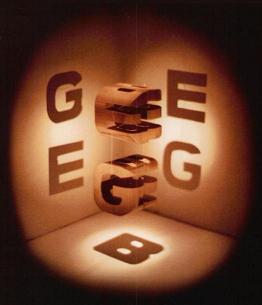
Cover of a book by Douglas Hofstadter
Monday, September 9, 2019
ART WARS at Harvard: The Wertham Professorship

See as well an obituary for Mrs. Wertham from 1987.
Related art —
Friday, July 11, 2014
|
For further details, search the Web for "Wertham Professor" + Eck.
Sunday, September 1, 2019
Verhexung

Illustration from other posts now tagged
Cervantes Meets Pascal.
See as well Verhexung in this journal.
This post was suggested by . . .
Tuesday, August 6, 2019
Thursday, June 27, 2019
Group Actions on the 4x4x4 Cube
For affine group actions, see Ex Fano Appollinis (June 24)
and Solomon's Cube.
For one approach to Mathieu group actions on a 24-cube subset
of the 4x4x4 cube, see . . .
For a different sort of Mathieu cube, see Aitchison.
Sunday, May 26, 2019
Sunday Shul: Connecting the Dots
"It's very easy to say, 'Well, Jeff couldn't quite connect these dots,'"
director Jeff Nichols told BuzzFeed News. "Well, I wasn't actually
looking at the dots you were looking at."
— Posted on March 21, 2016, at 1:11 p.m,
Adam B. Vary, BuzzFeed News Reporter
|
"Magical arrays of numbers have been the talismans of mathematicians and mystics since the time of Pythagoras in the sixth century B.C. And in the 16th century, Rabbi Isaac ben Solomon Luria devised a cosmological world view that seems to have prefigured superstring theory, at least superficially. Rabbi Luria was a sage of the Jewish cabalist movement — a school of mystics that drew inspiration from the arcane oral tradition of the Torah.
According to Rabbi Luria's cosmology, the soul and inner life of the hidden God were expressed by 10 primordial numbers
— "Things Are Stranger Than We Can Imagine," |
Monday, May 13, 2019
Doris Day at the Hudson Rock
" 'My public image is unshakably that of
America’s wholesome virgin, the girl next door,
carefree and brimming with happiness,'
she said in Doris Day: Her Own Story ,
a 1976 book . . . ."
From "Angels & Demons Meet Hudson Hawk" (March 19, 2013) —

From the March 1 post "Solomon and the Image," a related figure —
Tuesday, October 16, 2018
QDOS
For the title, see the Wikipedia article on the late Paul Allen.
See also . . .
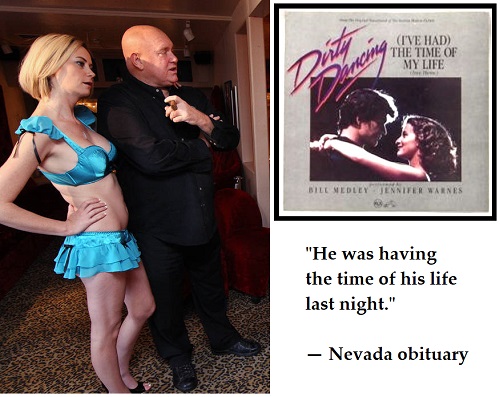
Related material — the late Patrick Swayze in Ghost and King Solomon's Mines.
"Please wait as your operating system is initiated."
Sunday, July 15, 2018
Jewish Oases
"… Lincoln Plaza Cinemas, the Juilliard String Quartet,
and the Strand Book Store remained oases
for cultural and intellectual stimulation."
— John S. Friedman in The Forward , Jan. 21, 2018
Read more:
https://forward.com/culture/392483/
how-fred-bass-dan-talbot-robert-mann
-shaped-new-york-culture/
From the Oasis in Steven Spielberg's "Ready Player One" (2018) —
I prefer, from a Log24 search for Flux Capacitor …
From "Raiders of the Lost Images" —
"The cube shape of the lost Mother Box,
also known as the Change Engine,
is shared by the Stone in a novel by
Charles Williams, Many Dimensions .
See the Solomon's Cube webpage."
Sunday, July 8, 2018
Sixers*
Thursday, June 7, 2018
Thursday, May 24, 2018
Bucharest Semiotics
See Solomon Marcus in this journal.
Related art —
Related fictions: The Seventh Function of Language (2017)
and Lexicon (2013). I prefer Lexicon .
Saturday, May 19, 2018
Flux Capacitor
For Tom Hanks and Dan Brown —
From "Raiders of the Lost Images" —
"The cube shape of the lost Mother Box,
also known as the Change Engine,
is shared by the Stone in a novel by
Charles Williams, Many Dimensions .
See the Solomon's Cube webpage."
See as well a Google search for flux philosophy —
https://www.google.com/search?q=flux+philosophy.
Uh-Oh.
From the linked website —
The circle-in-a-triangle symbol is known as "the triangle of art" —
See as well a post of Feb. 27, 2018: Raiders of the Lost Images.
Saturday, April 7, 2018
Sides
The FBI holding cube in "The Blacklist" —
" 'The Front' is not the whole story . . . ."
— Vincent Canby, New York Times film review, 1976,
as quoted in Wikipedia.
See also Solomon's Cube in this journal.
Some may view the above web page as illustrating the
Glasperlenspiel passage quoted here in Summa Mythologica —
“"I suddenly realized that in the language, or at any rate
in the spirit of the Glass Bead Game, everything actually
was all-meaningful, that every symbol and combination of
symbols led not hither and yon, not to single examples,
experiments, and proofs, but into the center, the mystery
and innermost heart of the world, into primal knowledge.
Every transition from major to minor in a sonata, every
transformation of a myth or a religious cult, every classical
or artistic formulation was, I realized in that flashing moment,
if seen with a truly meditative mind, nothing but a direct route
into the interior of the cosmic mystery, where in the alternation
between inhaling and exhaling, between heaven and earth,
between Yin and Yang, holiness is forever being created.”
A less poetic meditation on the above 4x4x4 design cube —
"I saw that in the alternation between front and back,
between top and bottom, between left and right,
symmetry is forever being created."
See also a related remark by Lévi-Strauss in 1955:
"…three different readings become possible:
left to right, top to bottom, front to back."
Monday, March 12, 2018
Stein
Stein reportedly died at 100 last Friday (March 9).
Related material —
Textiles by Stein arranged on the six faces of a cube —
Ethel Stein, "Circus & Slapstick," 1996
See also a less amusing approach to
patterns on the faces of a cube.
Monday, March 5, 2018
Sacramento Legend
Tuesday, February 27, 2018
Raiders of the Lost Images
On the recent film "Justice League" —
From DC Extended Universe Wiki, "Mother Box" —
"However, during World War I, the British rediscovered
mankind's lost Mother Box. They conducted numerous studies
but were unable to date it due to its age. The Box was then
shelved in an archive, up until the night Superman died,
where it was then sent to Doctor Silas Stone, who
recognized it as a perpetual energy matrix. . . ." [Link added.]
The cube shape of the lost Mother Box, also known as the
Change Engine, is shared by the Stone in a novel by Charles Williams,
Many Dimensions . See the Solomon's Cube webpage.
See too the matrix of Claude Lévi-Strauss in posts tagged
Verwandlungslehre .
Some literary background:
Who speaks in primordial images speaks to us
as with a thousand trumpets, he grips and overpowers,
and at the same time he elevates that which he treats
out of the individual and transitory into the sphere of
the eternal. — C. G. JUNG
"In the conscious use of primordial images—
the archetypes of thought—
one modern novelist stands out as adept and
grand master: Charles Williams.
In The Place of the Lion he incarnates Plato’s
celestial archetypes with hair-raising plausibility.
In Many Dimensions he brings a flock of ordinary
mortals face to face with the stone bearing
the Tetragrammaton, the Divine Name, the sign of Four.
Whether we understand every line of a Williams novel
or not, we feel something deep inside us quicken
as Williams tells the tale.
Here, in The Greater Trumps , he has turned to
one of the prime mysteries of earth . . . ."
— William Lindsay Gresham, Preface (1950) to
Charles Williams's The Greater Trumps (1932)
For fans of what the recent series Westworld called "bulk apperception" —
Saturday, February 10, 2018
Into the Upside Down
(Title suggested by the TV series Stranger Things )
" 'Untitled' (2016) is the most recent painting in the show
and includes one of Mr. Johns’s recurring images of a ruler."
— Image caption in an article by Deborah Solomon
in The New York Times online, Feb. 7, 2018
From a Log24 search for "Ruler" —

Related art —
See also, in this journal, Magic Mountain and Davos.
Tuesday, January 16, 2018
The Pentagram Papers
Other intersection-points-counting material —
See also Hanks + Cube in this journal —
Thursday, December 21, 2017
Tuesday, October 24, 2017
Visual Insight
The most recent post in the "Visual Insight" blog of the
American Mathematical Society was by John Baez on Jan. 1, 2017 —
A visually related concept — See Solomon's Cube in this journal.
Chronologically related — Posts now tagged New Year's Day 2017.
Solomon's cube is the 4x4x4 case of the diamond theorem —
Tuesday, October 10, 2017
The 35-Year Wait
From the Web this morning —

A different 35-year wait:
A monograph of August 1976 —

Thirty-five years later, in a post of August 2011, "Coordinated Steps" —

"SEE HEAR READ" — Walt Disney Productions
Some other diamond-mine productions —
Sunday, July 30, 2017
Sermon: MS R I


From Solomon's Cube —
"Here MSRI, an acronym for Mathematical Sciences Research Institute,
is pronounced 'Misery.' See Stephen King [and] K.C. Cole . . . ."
From a manuscript by Mikhail Gromov cited yesterday in MSRI Program —

Monday, July 24, 2017
Penguin Classics Deluxe Edition
The above title was suggested by a film trailer quoted here Saturday —
" Jeremy Irons' dry Alfred Pennyworth:
'One misses the days when one's biggest concerns
were exploding wind-up penguins.' "
"Penguin Classics Deluxe Edition" describes, among other books,
an edition of the I Ching published on December 1, 2015.
Excerpt from this journal on that date —
|
Tuesday, December 1, 2015
Verhexung
|
Related material —
Thursday, June 22, 2017
Wednesday, June 21, 2017
Concept and Realization
Remark on conceptual art quoted in the previous post —
"…he’s giving the concept but not the realization."
A concept — See a note from this date in 1983:
A realization —
Not the best possible realization, but enough for proof of concept .
Tuesday, May 2, 2017
Image Albums
Pinterest boards uploaded to the new m759.net/piwigo —
Update of May 2 —
Update of May 3 —
Update of May 8 —
Art Space board created at Pinterest
Saturday, April 1, 2017
Beyond All Recognition
Prequel —
Note that Yale's die design and use of the phrase "rigid motions"
differ from those in the webpage "Solomon's Cube."
Wednesday, March 29, 2017
Art Space Illustrated
Another view of the previous post's art space —
More generally, see Solomon's Cube in Log24.
See also a remark from Stack Exchange in yesterday's post Backstory,
and the Stack Exchange math logo below, which recalls the above
cube arrangement from "Affine groups on small binary spaces" (1984).
Friday, March 10, 2017
Transformers
Thursday, March 2, 2017
Stories
"We tell ourselves stories in order to live." — Joan Didion
The New York Times Magazine online today —
"As a former believer and now a nonbeliever, Carrère,
seeking answers, sets out, in The Kingdom , to tell
the story of the storytellers. He is trying to understand
what it takes to be able to tell a story, any story.
And what he finds, once again, is that you have to find
your role in it."
— Wyatt Mason in The New York Times Magazine ,
online March 2, 2017
Like Tom Hanks?
Click image for related posts.
Sunday, February 26, 2017
Poetic Order
Transformations acting on Solomon's Cube
furnish a model of poetic order.
Some backstory for Hollywood —

Saturday, February 18, 2017
Solid Symmetry (continued)
See Hanks + Cube in this journal … For instance …
Friday, July 11, 2014
|
Verbum
The Log24 version (Nov. 9, 2005, and later posts) —
|
VERBUM
|
See also related material in the previous post, Transformers.
Thursday, January 12, 2017
The Cherished Gift
From "Solomon's Cube" —
Related material —
"Is this a dagger I see before me?"

"No." (A line suggested by Polanski's 2010 "The Ghost Writer")
Saturday, December 3, 2016
SIAM Publication
For "the Trojan family" —
Related material on the late Solomon W. Golomb —
"While at JPL, Sol had also been teaching some classes
at the nearby universities: Caltech, USC and UCLA. In
the fall of 1962, following some changes at JPL—and
perhaps because he wanted to spend more time with
his young children— he decided to become a full-time
professor. He got offers from all three schools. He
wanted to go somewhere where he could 'make
a difference'. He was told that at Caltech 'no one has
any influence if they don’t at least have a Nobel Prize',
while at UCLA 'the UC bureaucracy is such that no one
ever has any ability to affect anything'. The result was
that—despite its much-inferior reputation at the time—
Sol chose USC. He went there in the spring of 1963 as
a Professor of Electrical Engineering—and ended up
staying for 53 years." — Stephen Wolfram, 5/25/16
See also Priority (Nov. 25) and "What's in a Name" (Dec. 1).
Monday, November 14, 2016
Flashback
Monday, October 3, 2016
Ein Eck
Friday, July 11, 2014
|
Friday, September 9, 2016
There IS such a thing …
http://gregegan.customer.netspace.net.au/APPLETS/29/NonSimple4E.gif
See also Dueling Formulas, Sinner or Saint?, and The Zero Obit.
Friday, August 5, 2016
Sleight of Post
From an earlier Log24 post —
Friday, July 11, 2014
|
From a post of the next day, July 12, 2014 —
"So there are several different genres and tones
jostling for prominence within Lexicon :
a conspiracy thriller, an almost abstract debate
about what language can do, and an ironic
questioning of some of the things it’s currently used for."
— Graham Sleight in The Washington Post
a year earlier, on July 15, 2013
For the Church of Synchronology, from Log24 on the next day —
From a post titled Circles on the date of Marc Simont's death —
See as well Verhexung in this journal.
Thursday, July 14, 2016
Symmetries and Correspondences
The title is that of a large-scale British research project
in mathematics. On a more modest scale …
"Hanks + Cube" in this journal —
Sunday, June 26, 2016
Common Core versus Central Structure
Rubik's Cube Core Assembly — Swarthmore Cube Project, 2008 —
"Children of the Common Core" —
There is also a central structure within Solomon's Cube —

For a more elaborate entertainment along these lines, see the recent film
"Midnight Special" —
Tuesday, June 21, 2016
The Central Structure
“The central poem is the poem of the whole,
The poem of the composition of the whole”
— Wallace Stevens, “A Primitive like an Orb”
The symmetries of the central four squares in any pattern
from the 4×4 version of the diamond theorem extend to
symmetries of the entire pattern. This is true also of the
central eight cubes in the 4×4×4 Solomon’s cube .
Saturday, May 28, 2016
Thursday, May 19, 2016
Kulturkampf
From a check tonight of The New York Review of Books —

These NYRB stories from May 15 and May 13 suggest a
review of images on Ratner's Star and on the Eye of God.
Above image reposted from Jan. 10, 2014
|
I. The structures in the Diamond Puzzle… Click on image for Jungian background. II: The structure on a recent cover of Semiotica… |
Above images reposted from May 5, 2016
Related material: The previous post, Dueling Formulas.
Tuesday, May 17, 2016
Monday, May 9, 2016
Search for the Lost Theorem
The three Solomons of the previous post (LeWitt,
Marcus, and Golomb) suggest the three figures
-1, 0, and 1 … symbols for the three elements
of the Galois field GF(3). This in turn suggests a
Search for The Lost Theorem. Some cross-cultural
context: The First of May, 2010.
Wednesday, May 4, 2016
Golomb and Symmetry
From the webpage Diamond Theory Bibliography —
Golomb, Solomon W.
Shift register sequences (Revised edition)
Aegean Park Press, Laguna Hills, CA, 1982
The fifteen "stencils" in Golomb's Fig. VIII-8, page 219,
are the same as the fifteen affine hyperplanes that
account for patterns' symmetry in diamond theory.
This figure occurs in a discussion of Rademacher-
Walsh functions.
Tuesday, May 3, 2016
Symmetry
A note related to the diamond theorem and to the site
Finite Geometry of the Square and Cube —
The last link in the previous post leads to a post of last October whose
final link leads, in turn, to a 2009 post titled Summa Mythologica .
Some may view the above web page as illustrating the
Glasperlenspiel passage quoted here in Summa Mythologica —
“"I suddenly realized that in the language, or at any rate
in the spirit of the Glass Bead Game, everything actually
was all-meaningful, that every symbol and combination of
symbols led not hither and yon, not to single examples,
experiments, and proofs, but into the center, the mystery
and innermost heart of the world, into primal knowledge.
Every transition from major to minor in a sonata, every
transformation of a myth or a religious cult, every classical
or artistic formulation was, I realized in that flashing moment,
if seen with a truly meditative mind, nothing but a direct route
into the interior of the cosmic mystery, where in the alternation
between inhaling and exhaling, between heaven and earth,
between Yin and Yang, holiness is forever being created.”
A less poetic meditation on the above web page* —
"I saw that in the alternation between front and back,
between top and bottom, between left and right,
symmetry is forever being created."
Update of Sept. 5, 2016 — See also a related remark
by Lévi-Strauss in 1955: "…three different readings
become possible: left to right, top to bottom, front
to back."
* For the underlying mathematics, see a June 21, 1983, research note.
Wednesday, April 20, 2016
Symmetric Generation of a Simple Group
The reference in the previous post to the work of Guitart and
The Road to Universal Logic suggests a fiction involving
the symmetric generation of the simple group of order 168.
See The Diamond Archetype and a fictional account of the road to Hell …

The cover illustration below has been adapted to
replace the flames of PyrE with the eightfold cube.
For related symmetric generation of a much larger group, see Solomon’s Cube.
Tuesday, April 12, 2016
Slow Art
The American Mathematical Society today got around to
publishing an obituary for Solomon Marcus, a Bucharest
mathematician who died on St. Patrick's Day, March 17.
See as well this journal on March 22.
Tuesday, March 22, 2016
The Zero Obit
Wednesday, January 13, 2016
Geometry for Jews
(Continued from previous episodes)
Boole and Galois also figure in the mathematics of space —
i.e. , geometry. See Boole + Galois in this journal.
Related material, according to Jung’s notion of synchronicity —
- This journal on the date, August 6, 2007, of the
above paper, and the following day —
posts now tagged Metamorphosis 2007 - This journal on two of the dates of the 2003 Haifa workshop
that the paper mentions in a footnote —
posts now tagged Solomon’s Mental Health Month
Saturday, January 2, 2016
The Beethoven Midrash
From Commentary magazine on Dec. 14, 2015 —
"Three significant American magazines started life in the 1920s.
The American Mercury , founded in 1924, met with the greatest
initial success, in large part because of the formidable reputations
of its editors, H.L. Mencken and George Jean Nathan, and it soon
became the country’s leading journal of opinion."
— Terry Teachout, article on the history of The New Yorker
A search for "American Mercury" in this journal yields a reference from 2003
to a book containing the following passage —
As Webern stated in "The Path to Twelve-Note Composition":
"An example: Beethoven's 'Six easy variations on a Swiss song.'
Theme: C-F-G-A-F-C-G-F, then backwards! You won't notice this
when the piece is played, and perhaps it isn't at all important,
but it is unity ."
— Larry J. Solomon, Symmetry as a Compositional Determinant ,
Chapter 8, "Quadrate Transformations"
This is the Beethoven piece uploaded to YouTube by "Music and such…"
on Dec. 12, 2009. See as well this journal on that same date.
Wednesday, December 2, 2015
Sunday, November 15, 2015
The Diamond and the Cube
Anyone who clicked on the Dirac search at the end of
the previous post, "Dirac's Diamond," may wonder why the
"Solomon's Cube" post of 11 AM Sunday, March 1, 2009,
appeared in the Dirac search results, since there is no
apparent mention of Dirac in that Sunday post.
<!– See also "a linear transformation of V6… which preserves
the Klein quadric; in this way we arrive at the isomorphism of
Sym(8) withthe full orthogonal group O+(6; 2)." in "The
Classification of Flats in PG(9,2) which are External to the
Grassmannian G1,4,2 Authors: Shaw, Ron;
 Maks, Johannes; Gordon, Neil; Source: Designs,
Codes and Cryptography, Volume 34, Numbers 2-3, February
2005 , pp. 203-227; Publisher: Springer.  For more details,
see "Finite Geometry, Dirac Groups and the Table of Real
Clifford Algebras," by R. Shaw (U. of Hull), pp. 59-99 in
Clifford Algebras and Spinor Structures, by By Albert
Crumeyrolle, Rafał Abłamowicz, Pertti Lounesto,
published by Springer, 1995. –>
Tuesday, September 29, 2015
Quotes for Michaelmas
A search in this journal for material related to the previous post
on theta characteristics yields…
"The Solomon Key is the working title of an unreleased
novel in progress by American author Dan Brown.
The Solomon Key will be the third book involving the
character of the Harvard professor Robert Langdon,
of which the first two were Angels & Demons (2000) and
The Da Vinci Code (2003)." — Wikipedia
"One has O+(6) ≅ S8, the symmetric group of order 8! …."
— "Siegel Modular Forms and Finite Symplectic Groups,"
by Francesco Dalla Piazza and Bert van Geemen,
May 5, 2008, preprint.
"It was only in retrospect
that the silliness
became profound."
— Review of
Faust in Copenhagen
"The page numbers
are generally reliable."
For further backstory, click the above link "May 5, 2008,"
which now leads to all posts tagged on080505.
Saturday, April 25, 2015
Ghosts and Shadows
For Poetry Month
From the home page of Alexandre Borovik:
Book in progress: Shadows of the Truth
This book (to be published soon) can be viewed
as a sequel to Mathematics under the Microscope ,
but with focus shifted on mathematics as it was
experienced by children (well, by children who
became mathematicians). The cover is designed
by Edmund Harriss.

See also Harriss's weblog post of Dec. 27, 2008, on the death
of Harold Pinter: "The Search for the Truth Can Never Stop."
This suggests a review of my own post of Dec. 3, 2012,
"The Revisiting." A figure from that post:
Thursday, February 26, 2015
Brit Award
"The Brit Awards are… the British equivalent
of the American Grammy Awards." — Wikipedia
Detail of an image from yesterday's 5:30 PM ET post:

Related material:
From a review: "Imagine 'Raiders of the Lost Ark'
set in 20th-century London, and then imagine it
written by a man steeped not in Hollywood movies
but in Dante and the things of the spirit, and you
might begin to get a picture of Charles Williams's
novel Many Dimensions ."
See also Solomon's Seal (July 26, 2012).
Monday, January 5, 2015
Gitterkrieg*
Wednesday, March 13, 2013
|
"I pondered deeply, then, over the
adventures of the jungle. And after
some work with a colored pencil
I succeeded in making my first drawing.
My Drawing Number One.
It looked something like this:
I showed my masterpiece to the
grown-ups, and asked them whether
the drawing frightened them.
But they answered: 'Why should
anyone be frightened by a hat?'"
* For the title, see Plato Thanks the Academy (Jan. 3).
Wednesday, September 17, 2014
Raiders of the Lost Articulation
Tom Hanks as Indiana Langdon in Raiders of the Lost Articulation :
An unarticulated (but colored) cube:
A 2x2x2 articulated cube:
A 4x4x4 articulated cube built from subcubes like
the one viewed by Tom Hanks above:
Saturday, July 12, 2014
Mars Package

“For me it is a sign that we have fundamentally different
conceptions of the work of the intelligence services.”
— Germany’s Chancellor Angela Merkel in
theguardian.com, Saturday, 12 July 2014, 14.32 EDT
Another sort of service, thanks to Dan Brown and Tom Hanks:
Friday, July 11, 2014 |
Sequel
A sequel to the 1974 film
Thunderbolt and Lightfoot :
Contingent and Fluky
Some variations on a thunderbolt theme:
These variations also exemplify the larger
Verbum theme:


A search today for Verbum in this journal yielded
a Georgetown University Chomskyite, Professor
David W. Lightfoot.
"Dr. Lightfoot writes mainly on syntactic theory,
language acquisition and historical change, which
he views as intimately related. He argues that
internal language change is contingent and fluky,
takes place in a sequence of bursts, and is best
viewed as the cumulative effect of changes in
individual grammars, where a grammar is a
'language organ' represented in a person's
mind/brain and embodying his/her language
faculty."
Some syntactic work by another contingent and fluky author
is related to the visual patterns illustrated above.
See Tecumseh Fitch in this journal.
For other material related to the large Verbum cube,
see posts for the 18th birthday of Harry Potter.
That birthday was also the upload date for the following:
See esp. the comments section.
Friday, July 11, 2014
Spiegel-Spiel des Gevierts
Friday, May 9, 2014
Models of Everything
“The About page contains detailed descriptions of the project….”
— The Illustris project on constructing a model of the universe
For the mathematics of a simpler traditional Chinese model
of everything, see
- Geometry of the I Ching ,
- Solomon’s Cube, and the
- Diamond Space about page.
Thursday, March 27, 2014
Diamond Space
Definition: A diamond space — informal phrase denoting
a subspace of AG(6, 2), the six-dimensional affine space
over the two-element Galois field.
The reason for the name:
Click to enlarge.






